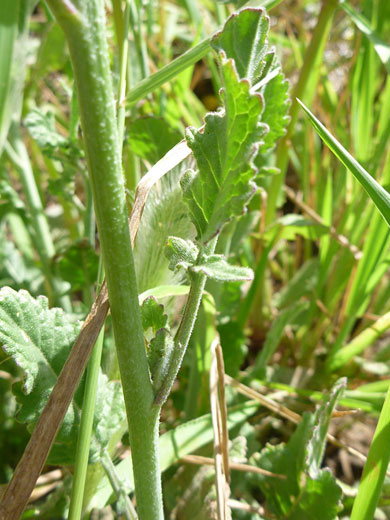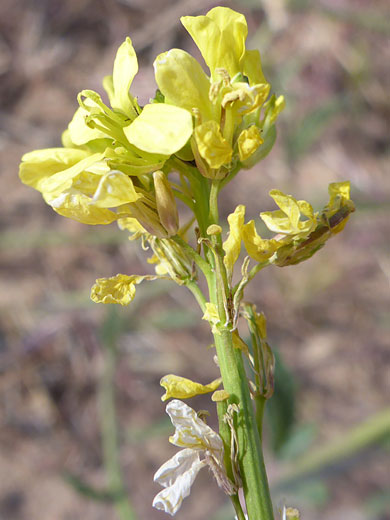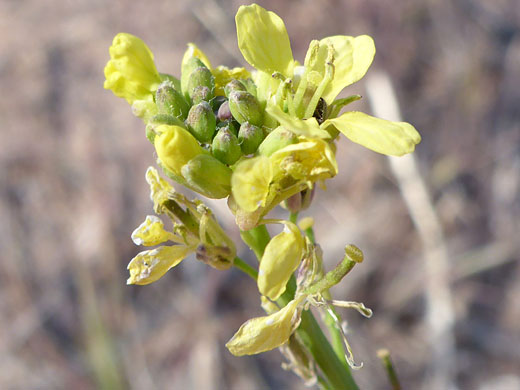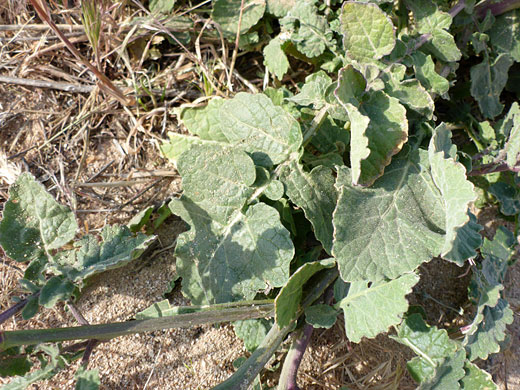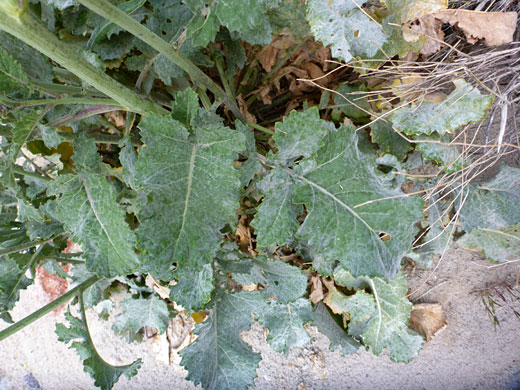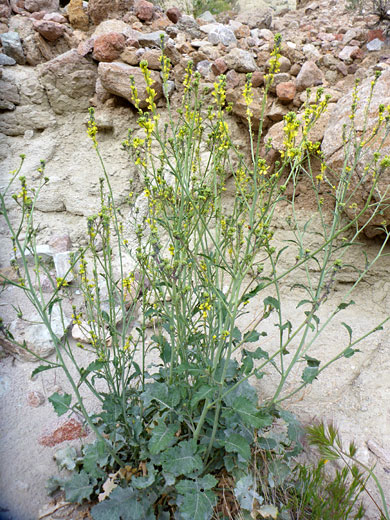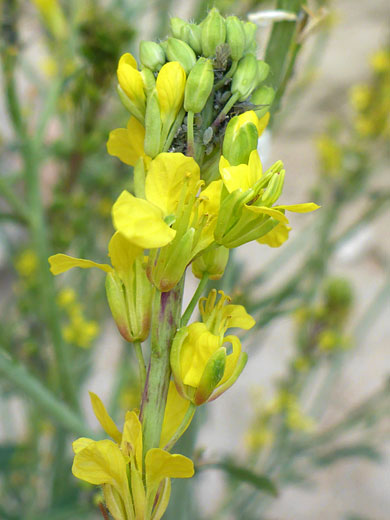Common names:
Shortpod mustard, Mediterranean hoary mustard
Family:
Scientific name:
Hirschfeldia incana
Synonym:
Brassica geniculata
Main flower color:
Range:
Most of California, plus parts of adjoining states (non native)
Height:
Up to 40 inches
Habitat:
Disturbed areas, fields, roadsides, moist canyons
Leaves:
Dark green, pinnately lobed, hairy, with large edge teeth
Season:
March to June
Originating in the Mediterranean, hirschfeldia incana has spread to parts of many other countries, including the US, where it mostly occurs in California - along the coast, in the Central Valley, across the Sierra Nevada foothills and in the Mojave Desert. It is also found in small areas of Oregon, Nevada and central Arizona. Flowers are typical of the mustard family; they have four obovate, non-overlapping yellow petals, narrow (clawed) at the base. Above the claw, the petal blade is reflexed by about 90 degrees.
Basal leaves are pinnately lobed, with the largest lobe at the tip; they have hairy surfaces and irregular teeth along the edges. Leaves around the base form a rosette, lying flat against the ground. Middle stem leaves typically have just 3 lobes, while upper stem leaves are unlobed. Plants branch from the base and along the main stem.
Basal leaves are pinnately lobed, with the largest lobe at the tip; they have hairy surfaces and irregular teeth along the edges. Leaves around the base form a rosette, lying flat against the ground. Middle stem leaves typically have just 3 lobes, while upper stem leaves are unlobed. Plants branch from the base and along the main stem.
All Contents © Copyright The American Southwest | Comments and Questions | Contribute | Site Map


